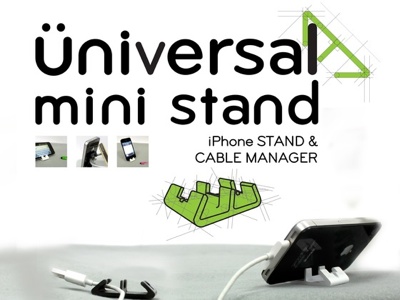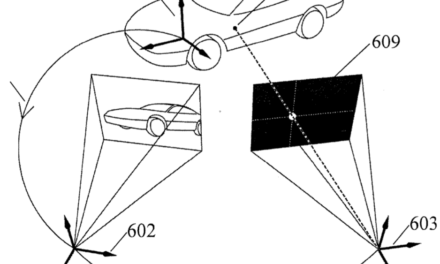By Greg Mills
When the Motorola/Apple cell phone came out in the summer of 2005, it was a great disappointment to both Apple and Apple fans. You might as well have taped an iPod to a standard cell phone. It sucked. Apple, by that point in time, already knew to do a cell phone right; they would have to start from scratch. The first thing they did was junk their cell phone engineering relationship with Motorola and scrap conventional notions of what a cell phone was.
Then, the engineers and designers at Apple began to put the combination of novel software and touch screen hardware together that became the first iPhone. Since that time, Apple has taught Motorola a thing or two about smart cell phones. For that matter, every manufacturer of cell phones has been taken to the wood shed by Apple for a sound beating.
The punishment continues as everyone in the cell phone industry has been made virtual roadkill by the great Mac truck with an Apple logo on the hood. Share prices of all the competition continue to either stagnate or sharply decline as Apple grows its market share at their expense.
The PC industry had more or less thrived over the years with the business relationship with Microsoft where the hardware companies made PC computers and Microsoft provided the operating system software that ran them. That relationship could well have continued with cell handset manufactures had Microsoft moved into the smartphone OS space in a timely fashion. Google saw the opening and captured the opportunity.
Since Microsoft’s windows cell phone software was so uninspired, years later they are still trying to catch up. Recent reports are that a number of handset manufacturers running Windows Mobile are quite disappointed with sales. The top echelon of creative people at Microsoft are reportedly going elsewhere in droves right now. There doesn’t seem to be enough incentive offered to hold them down in a stifling creative environment under Ballmer. Support for the Windows phone OS has to be seen as the handset manufacturers hedging their bets against Android tanking for legal reasons. Keep in mind that all the Android OS handset makers have been sued by Apple over foundation aspects of the Android OS.
Google took the Apple iOS and created a similar look and feel using open source elements. They filled the OS vacuum the cell phone companies were seeking to fill since building the physical phone, that would do most of what an iPhone could do, was pretty well understood. The Apple DNA that has turned up in the form of proprietary chips is much harder to match as is the software. Apple was very careful to patent every aspect of the iOS early in the game. Patents filed before anyone outside Apple had ever seen an iPhone are just being issued and there is a ton of additional patents in process. Add the tendency for Apple to purchase patent rights whenever possible, and you have a potential nightmare brewing for the Android platform.
What has transpired during the exclusive marketing phase of the Apple/AT&T business relationship, is that the demand for iPhone in markets where it wasn’t available, created an “iPhone vacuum.” Nature abhors a vacuum and so do high tech markets. There is just too much money out there to not fulfill a major demand in the multibillion dollar cell phone industry.
That is where Android came in. The competition for cell phone handset manufacturers was such that they were left high and dry, clamoring for some sort of off the shelf OS to make their phones “smart.” RIM and Nokia have their own OS and, of course, Windows is now being offered. Android is farther along in market share for smart phones, while the Nokia Sybian has a large installed base but doesn’t seem to be gaining traction.
The proof of what I am saying is apparent at Verizon. Android phones are on sale for $100 with a two-year contract since Verizon thinks the iPhone is going to suck the air out of the room when it goes on sale.
You remember dumb phones? My last dumb phone was a Motorola flip phone that ran on the Nextel network. After Nextel was hijacked by Sprint, I counted the days until the iPhone came out and my contract with Sprint expired to allowed me to switch to AT&T. Despite all my complaints about dropped calls on AT&T, they did have a much better customer service system than Sprint did.
The “dumb phones” still amount to roughly 80% of all cell phones out there. Smart phones are the 20% that includes iPhone, Android, RIM and a number of other minor players. Dumb phone users are well aware of the cool things smart phones do and are willing to switch when they are legally able to. They’re often held back by contracts that normally are of a two-year duration. They also are aware of the features the iPhone offers and want the real thing. When the cell companies can’t deliver a real iPhone, the alternative is likely an Android phone. That is a just temporary market niche.
It is the “real thing” vs the alternative offering that is the declining marketing reality Android phone makers now face. The PC press gleefully touts the numbers that show Android outselling the iPhone. The reason for that sales advantage is simply that the now expired exclusive marketing plan Apple used to launch and develop its entire smartphone infrastructure drove that market. That foundation is fully established and Apple is now tooled up to offer iPhones and iPad in both of the two main radio formats used by cell phone companies around the world. Even variations in the frequencies used are now easy to adapt in new iPhones.
Watch the Verizon phone sell like hotcakes and within a short period of time Apple to also begin to sell iPhones to the other US cell companies. At that point, the real thing is available to everyone, and the alternative touch screen smart phones are toast. This is going to amount to a marketing holocaust for Android within a year’s time. Look for the numbers of fresh Android phones sold to drop off precipitously and handset makers to become even more competitive as the Android market shrinks.
Then there is the issue of the patent infringement suits waiting in the wings. All the Android phone companies have an Apple Federal Lawsuit sitting on their attorneys’ desks claiming their touch screen phones are violating Apple patents. This promises to be blood bath #2 for the Android industry. First Apple sells the iPhone everywhere capturing much more of the market ,and then the legal assault begins to completely take them out.
In addition to the market and legal issues are inherent weakness in Android due to open source issues and the enormous fragmentation in Android App stores and rampant piracy. Developers in the Android platform face as much as a 90% piracy rate I have never heard much about piracy in the iOS app market except for “jail broken” iPhones, which are numerically insignificant.
For all the above reasons, Android is set to fall off.
That’s Greg’s bite for today.
(Greg Mills is currently a Faux Artist in Kansas City. Formerly a new product R&D man for the paint sundry market, he holds 11 US patents. He’s working on a solar energy startup using a patent pending process of turning waste dual pane glass into thermal solar panels used to heat water. Married, with one daughter still at home, Greg writes for intellectual web sites and Mac related issues. See Greg’s web sites at http://www.gregmills.info . He can be emailed at gregmills.mac.)




